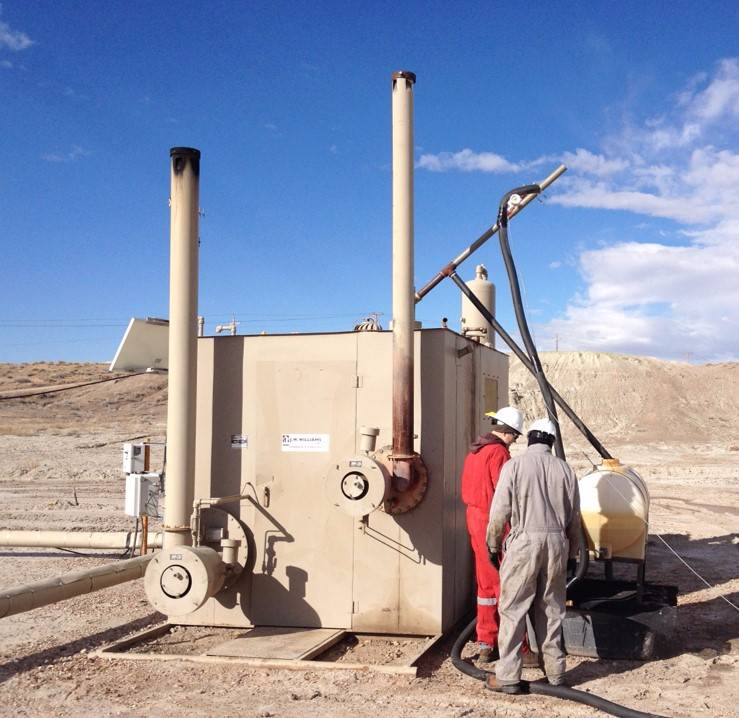Emissions Measurement and Inventory Development
 Ultimately, the solution to most air quality problems is to reduce the emission of pollutants into the atmosphere, but this simple (and admittedly simplistic) solution requires that we first know the source, composition, and quantity of the pollutant. Unfortunately, not all emissions are adequately characterized. A host of recent studies have shown that official estimates of oil and gas emissions are low, and sources excluded from or underreported in current emissions inventories may be to blame. We measure emissions from oil and gas sources and compile source locations and activity data to improve these estimates.
Ultimately, the solution to most air quality problems is to reduce the emission of pollutants into the atmosphere, but this simple (and admittedly simplistic) solution requires that we first know the source, composition, and quantity of the pollutant. Unfortunately, not all emissions are adequately characterized. A host of recent studies have shown that official estimates of oil and gas emissions are low, and sources excluded from or underreported in current emissions inventories may be to blame. We measure emissions from oil and gas sources and compile source locations and activity data to improve these estimates.
A major focus of this emissions work in recent years has been produced water disposal facilities, whose storage tanks and surface ponds are not included in most current inventories because their emission rates are not well known. We have recently completed the first ever comprehensive measurements of emissions from produced water disposal facilities. You can find out more about our work to characterize emissions from our produced water page.
Another emissions measurement focus is fugitive emissions of formaldehyde and other carbonyls from the oil and gas industry. Formaldehyde is a particularly important ozone precursor during winter inversion episodes, but no estimates exist of its emissions from fugitive sources. We are working to characterize formaldehyde emissions in oil and gas production processes and are incorporating this information into emissions inventories.
We are engaged in a multi-year project to understand the levels and drivers of hydrocarbon emissions from Uintah Basin soils, particularly well pad soils.

